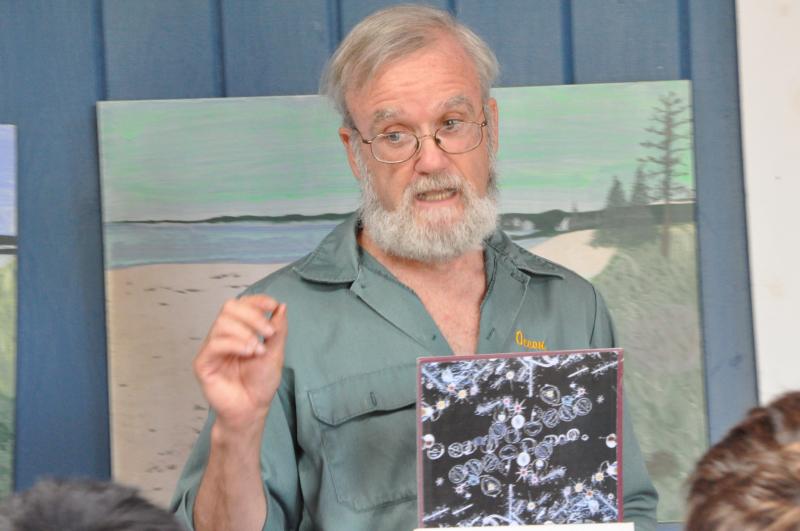Where the lobster and alewives play
Like moths to a flame, people flock to Maine's waters when the weather is warm.
But they aren't alone.
Phil Averill, a retired marine biologist and coastal educator spoke Friday at Pemaquid Beach State Park during Beachcombers Rest Nature Center about the Gulf of Maine and what makes it one of the truly unique bodies of water in the world.
“If you go to Pemaquid Point and look out, what do you see? It's not the ocean,” he said. “It's the Gulf of Maine. The ocean is another 200 miles away.”
“A gulf is a big body of water with land on three sides,” Averill said. “The Gulf of Maine is unique because it has four sides.”
The Gulf of Maine is defined by Maine and New Hampshire to the west, Nova Scotia to the north and Cape Cod to the south.
“Georges Bank is the fourth side,” Averill said. “In some places it's only nine feet deep. You can go way out and look down and there's the ocean floor.
“(Georges Bank) acts like a dam, and very cool things happen there.”
Because Georges Banks creates a barrier to the ocean, it keeps all the algae in the Gulf, which makes it a veritable buffet.
“Fishing is a big deal in Maine,” he said. “We catch a lot of fish here.”
It starts at the smallest level, Averill said, with some of the ocean's microscopic inhabitants.
“The first part of the puzzle is that if you were to come down here in the springtime and ran into the water, you'd find out quickly that the water is very, very cold,” he said. “It's usually only 38 or 39 degrees Fahrenheit; there are very few places where the (ocean) gets that cold.”
Because cold water is denser it allows more carbon dioxide to collect, Averill said.
There are more than 50 rivers that empty into the Gulf, but six of those pump out massive amounts of nutrients from run-off. That run-off comes from as far away as Mount Washington in New Hampshire to Quebec, Canada.
Plant nutrients are frisked away on rivers that end in the Gulf, which along with the increased density of carbon dioxide and early-season sunshine, make algae grow exponentially.
“There's so much algae in the Gulf of Maine, you can see it from space,” he said.
That algae represents the first strand in the feeding web. With an abundance of food, smaller microorganisms feast on the algae, and the food chain continues until it reaches people, Averill said.
With Maine's fishing industry under a lot of stress and scrutiny, Averill said there are more fish in the sea than people have been led to believe.
“It's a resource that's not as depleted as they say it is,” he said. “There's a lot more fish than they say there is.”
Averill displayed a pie chart that showcased where total landings of fish came from along the eastern seaboard. The three Gulf of Maine states (Maine, New Hampshire and Massachusetts) comprised roughly 40 percent of the total take.
“If Georges Banks wasn't there, none of this would be going on,” he said.
Ben Bulkeley can be reached at 207-633-4620 or bbulkeley@boothbayregister.com. Follow him on Twitter: @BBRegisterBen.
Event Date
Address
United States

























